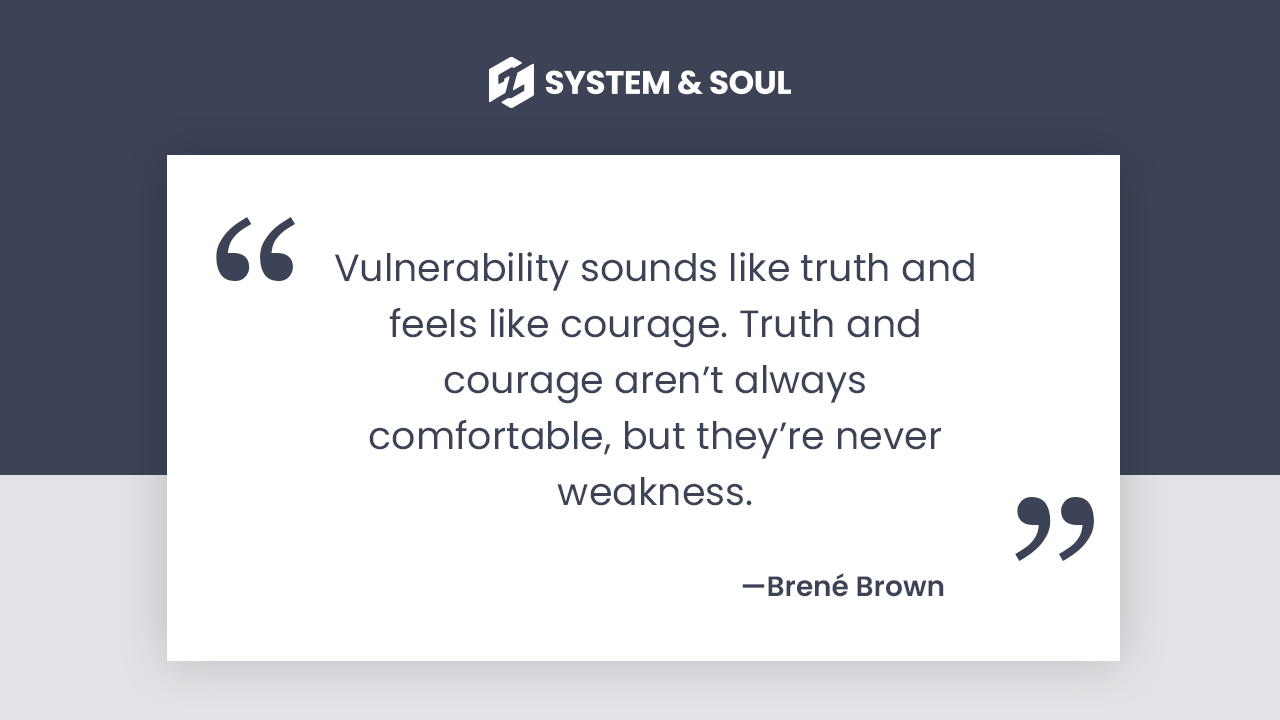Share this
Culture of Vulnerability
by Admin on Sep 14, 2021 12:00:00 AM

In recent years, empathy, inclusiveness and vulnerability have joined the long-established attributes of teamwork, communication and problem-solving in lists of essential leadership skills. Of these, vulnerability has catapulted to the top spot, in large measure due to the writings of American author and researcher Brené Brown. Brown says, "Vulnerability sounds like truth and feels like courage. Truth and courage aren't always comfortable, but they are never weakness."
Creating a culture of vulnerability is the first step in building an environment where your team can hold each other accountable to your mission and goals.
Companies that encourage vulnerability create an environment that allows:
- Empathy
- Trust
- Innovation
- Inclusivity and equity
- Engaging in rather than shying away from hard conversations
- Problem-solving
- Feedback
- Ethical decision making
Many of today’s companies have open workspaces and open-door policies, but what good is that if we are closed off from others or even ourselves? People who never face their fears are unable to move through them. They can’t ask for help because they are being dishonest with themselves. When we create cultures that value authenticity, we remove fear from the equation. People will ask for help, and give you the opportunity to guide them through the challenges towards their greatest contributions.
Psychological Safety is said to be the single most important factor in high-performance teams; a fact that is being recognized by more and more organizations across the globe.
Timothy R Clarke in his book “The Four Stages Of Psychological Safety” describes a conceptual model of four “stages” of psychological safety that teams can move through, progressing from stage 1 to stage 4.
These four stages are:
- Inclusion Safety – members feel safe belonging to the team. They are comfortable being present, do not feel excluded, and feel like they are wanted and appreciated.
- Learner Safety – members are able to learn by asking questions. Team members here may be able to experiment, make (and admit) small mistakes, and ask for help.
- Contributor Safety – members feel safe to contribute their own ideas, without fear of embarrassment or ridicule. This is a more challenging state because volunteering your own ideas can increase the psychosocial vulnerability of team members.
- Challenger Safety – members can question others’ ideas or suggest significant changes to ideas, plans, or ways of working.
One of the interesting things about these four stages is that if someone on the team is at a significantly different stage than the others on the team, it can feel highly discordant. It’s important to think about increasing the psychological safety of all of the team and bringing everyone along together at a similar pace.
As you know, a TON of challenges exist in leadership. Whether you're looking for solutions, or just want reminders, join The 261 newsletter for thoughts, actions, and tips on how to lead and manage well – 261 business days a year.
Share this
- 261 (53)
- advice (22)
- leadership (22)
- people (20)
- question (18)
- lesson (14)
- team (14)
- design (12)
- cadence (10)
- culture (9)
- action (8)
- destination (7)
- reminder (7)
- ethos (6)
- meetings (6)
- vulnerability (5)
- planning (4)
- roadmap (3)
- score (3)
- strategy (3)
- bets (2)
- brand (2)
- clarity (2)
- confidence (2)
- growth (2)
- mindset (2)
- s2 model (2)
- scale (2)
- struggle (2)
- weekly sync (2)
- How to Win Friends and Influence People by Dale Ca (1)
- break (1)
- coach story (1)
- conversation (1)
- curiosity (1)
- f.i.t. (1)
- gratitude (1)
- identity (1)
- refuel (1)
- resistance (1)
- to-do (1)
- values (1)
- June 2025 (1)
- August 2024 (1)
- September 2023 (1)
- June 2023 (2)
- May 2023 (1)
- March 2023 (4)
- January 2023 (2)
- December 2022 (42)
- November 2022 (5)
- October 2022 (2)
- September 2022 (1)
- August 2022 (1)
- July 2022 (4)
- June 2022 (2)
- May 2022 (2)
- April 2022 (2)
- March 2022 (2)
- February 2022 (1)
- January 2022 (1)
- December 2021 (2)
- November 2021 (1)
- October 2021 (5)
- September 2021 (5)

No Comments Yet
Let us know what you think